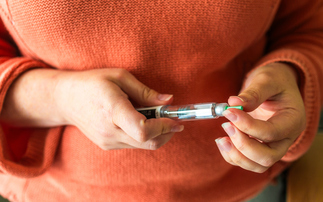Fergus Bescoby examines the consequences and underwriting ramifications of this disease.
Introduction
Arthritis is a term used to describe a number of painful conditions of the joints and bones. There are over 100 different forms of arthritis.
The most common form, osteoarthritis (degenerative joint disease) is a result of trauma to the joint, infection of the joint, or age. Other arthritis forms are rheumatoid arthritis, psoriatic arthritis and autoimmune diseases in which the body attacks itself. Septic arthritis is caused by joint infection. Gouty arthritis is caused by deposition of uric acid crystals in the joint, causing inflammation.
Arthritis is often associated with other disease's or associated with involvement of other organs including the eyes, the organs of the gastrointestinal tract, or the nervous system; a complication of another disease; trauma or infections.
For the purpose of this article, we will focus on the more common forms of arthritis, namely osteo, rheumatoid and gouty arthritis.
Osteoarthritis
Osteoarthritis is the most common form of arthritis and usually occurs in older people. Cartilage (connective tissue) between the bones gradually wastes away (degenerates), and this can lead to painful rubbing of bone on bone in the joints. It may also cause joints to fall out of their natural positions (misalignment).
It's often caused by wear and tear, but could also be as a result of joint damage from an injury or the repair that occurs after the injury. For example, if cartilage has been removed from the knee, osteoarthritis almost always occurs in the knee afterwards. Osteoarthritis usually occurs at the end joints of the fingers, the base of the thumb, the knees, big toes and feet. The injury that causes the arthritis could have occurred at any time.
Treatment
Osteoarthritis is usually treated with painkillers, anti-inflammatory medicine known as non-steroidal anti-inflammatory drugs (NSAIDs) to reduce the inflammation and exercise (depending on which joints are affected). If the arthritis is in the hips or knees, surgery may be required. No medicine can cure osteoarthritis but they can help to relieve symptoms.
The surgical options available have advanced recently, particularly if you have only mild osteoarthritis. Some of these are listed below:
• Realignment or osteotomy - this changes the position of the bones in your joint. The surgeon will move the bones so that they aren't being supported by a diseased area.
•
• Hip resurfacing - the damaged surfaces in the hip joint are replaced with prosthetic (artificial) ones.
•
• Chondrocyte or cartilage transplants - research is continuing into the possibility of growing new, healthy cartilage cells and transplanting them into people who have osteoarthritis. In this procedure cells from the joint surface are harvested during a knee arthroscopy.
The cells, called chondrocytes, are taken to a laboratory and grown in a culture to raise many more cells. After a new population of cells have been raised, another operation is performed to place the new cells within the damaged joint.
This is proof that advances in medicine are giving arthritis sufferers renewed hope of improving their quality of life, however to date the results have been mixed. Furthermore, the number of patients in which these therapies may work is very small.
Rheumatoid arthritis
Rheumatoid arthritis (RA) is a chronic, debilitating auto-immune disease in which the body's immune system attacks joints. It is a systemic disease which means that it can affect the whole body and internal organs, but most typically, rheumatoid arthritis affects the hands, wrists and feet as well as knees, hips and shoulders. It can lead to reduction of movement, and the breakdown of bone and cartilage.
RA is an inflammation in the joints that is caused by damage to the immune system. The white blood cells start to produce antibodies and cause inflammation in the joints, which become painful, stiff and swollen. The disease produces a soft swelling that feels boggy to the touch, whereas osteoarthritis causes joints to feel hard and knobbly. There is an aching pain in the joints and sometimes flu-like symptoms.
It's unclear what causes it, there may be a genetic element, but it's not hereditary. It usually affects people aged 25 to 55 but can develop in anyone, including children.
RA is known as a progressive disease: over time, the destruction of tendons, ligaments and bone in joints gets worse, leading to pain. If left uncontrolled, RA will cause irreversible damage to joints in the majority of patients.
The disease can affect the ability to complete everyday tasks such as cooking and gardening and depending on the amount and level of joint destruction can cause severe disability and loss of independence in some cases. The rate at which the disease progresses varies from person to person.
In addition to joint swelling and stiffness, people with Rheumatoid arthritis can also experience tiredness, fever and weight loss. People with RA are also at increased risk of premature death, coronary artery disease and infection.
Treatment
Blood tests can diagnose full-blown rheumatoid arthritis. If you test positive you're more likely to develop joint damage, making it more likely that you'll be treated with strong medication.
Inflammatory arthritis, including rheumatoid arthritis, can be treated using painkillers, but the disease process will need to be stopped with the use of disease-modifying drugs.
If these fail a course of biologic drugs may be prescribed. This is a new class of drug which mimics the effects of substances that are naturally made by your body's immune system. Steroids may also be helpful but will not be given in the long-term due to side effects.
Other forms of treatment include physiotherapy, lifestyle changes (including exercise and weight control), orthopedic bracing, and dietary supplements (symptomatic or targeted at the disease process causing the arthritis). Arthroplasty (joint replacement surgery) may be required in eroding forms of arthritis.
In general, studies have shown that physical exercise of the affected joint can have noticeable improvement in terms of long-term pain relief. Furthermore, exercise of the arthritic joint is encouraged to maintain the health of the particular joint and the overall body of the person.
Gouty Arthritis (Gout)
Gouty arthritis refers to a form of arthritis caused by deposits of needle-like crystals of uric acid and accounts for approximately 5% of all cases of arthritis.
It is one of the most painful rheumatic diseases which usually strikes a single joint, most commonly the big toe (about 75% of first attacks are in this toe), however, it can also affect other joints, such as the ankle, knee and wrist. Gouty arthritis is rare in children and young adults. Men are more likely to develop gouty arthritis than women.
Treatment
Acute (sudden) attacks of gout can be treated with anti-inflammatory medicine. People suffering from recurrent attacks however may require drugs such as allopurinol, which lower uric acid levels and could stop the attacks altogether. It is also very important to modify diet and lifestyle in order to avoid certain products which increase uric acid.
Some interesting facts and figures
• 10 million working days were lost in 2006/7 due to musculoskeletal conditions, second only to stress, depression and anxiety
• The cost to the UK of musculoskeletal conditions is £5.7billion annually
• 8.5 million people in the UK have osteoarthritis and 387,000 people in the UK have rheumatoid arthritis
• The total number of people receiving DLA as a result of arthritis and other musculoskeletal conditions is more than twice that due to heart and chest disease and stroke combined
• The prevalence rate of arthritis in women (227/1000) is twice that of men
(113/1000)
• Arthritis affects 1 in 5 adults in the UK
• Obesity is a major risk factor for osteoarthritis of the knee. The UK
currently has the eighth highest obesity rate in the world - and this is
rising
• An Arthritis Care Survey found that people with osteoarthritis
in employment experienced OA pain less frequently
Underwriting Implications
It is important that the underwriter takes the following factors into account when assessing this risk, especially when TPD and IPC have been requested:
• Client's age (the younger ages are a greater risk)
• Treatment (certain drugs are more damaging than others)
• Occupation (manual duties v clerical duties)
• Deferment period for IPC (may be able to offer an extended defer period)
•
Osteo-arthritis and gouty arthritis will normally be standard rates for life with a loading or exclusion being applied to TPD and IPC depending on the severity and the factors mentioned above.
Rheumatoid arthritis will often be rateable for life cover depending on the extent of the symptoms. TPD and IPC will generally be declined unless the disease is inactive and the client has been symptom free for several years.
IPC/TPD will not normally be offered unless the disease is inactive and the client has been symptom free for several years.
Note that for CIC or SIC, where arthritis is an insured event, an exclusion will normally be applied.
FergusBescoby is underwriting development manager at PruProtect
Reference
The Arthritis Research Campaign (arc)
http://www.about.com
Arthritis Care
Hannover Re











